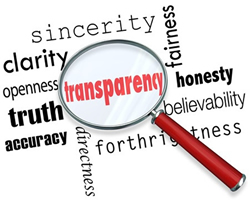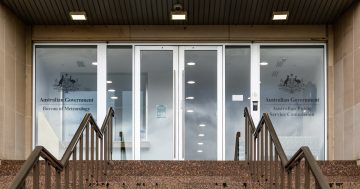Brian de Haaff* says information shared with openness and honesty promotes workplace trust — but leaders must also understand that transparency has its limits.
 I love wild water. Fortunately I live in California, home to some of the wildest.
I love wild water. Fortunately I live in California, home to some of the wildest.
Recently I learned about Smith River, one of the world’s cleanest undammed rivers.
The river’s sparkling turquoise colour is almost unreal.
Sunlight cuts through the crystal waters and reflects the blue-green hues of the serpentine riverbed.
Transparency is powerful.
When something is clear enough, what is reflected back can create incredible beauty.
The idea of transparency in the workplace has been a watchword since the 1990s.
I think a lot of it had to do with shifting cultural mores and increasing access to information as technology rapidly advanced.
It simply was not possible to continue cloaked corporate dealings.
People demanded to know how the business was performing, what decisions were being made, and how their work fitted in.
Fast forward 30 years and today you can find plenty of studies where folks rank transparency as one of the most important traits they look for in an employer.
What does it really mean to be transparent at work?
To me it means that information is shared with openness and honesty — people can understand and trust what you say.
When my business partner and I were first documenting what would become The Responsive Method (our framework for success), we put ‘transparent’ as one of the tenets.
We hold true to it today.
We discuss company performance weekly, encourage bidirectional feedback, and make strategic plans available to everyone on the team.
However, some things must remain confidential.
Transparency in the workplace does not mean sharing everything all the time.
There are times when you cannot or should not divulge information.
It might be inappropriate, unethical, or simply unadvisable to disclose certain information.
You should not knowingly share details about one client with another.
Or talk about a colleague’s medical situation when they asked you to keep it private.
The larger an organisation grows, the more everyone has to think about what is communicated, how, and why.
Too much transparency can create confusion.
An organisation is ever-changing — announcing every minor up and down will leave the team with whiplash.
Too little transparency can create distrust.
People will start to wonder why information is shrouded in secrecy.
Teammates who are left guessing will eventually fill in the blanks with their own assumptions.
There are situations when less is better.
Yet it is still possible to always be transparent, even when you cannot say everything.
Here is how I approach it.
Be truthful
Never lie — not even a little.
Sometimes people try to alter the facts to soften the blow of bad news.
A Chief Executive I once worked with did this when talking to his Board about sales velocity for any given month, pumping up opportunities that were not really there.
Even with good intentions, dishonesty eliminates any chance of being trusted by others.
Be consistent
Trust is earned.
It comes when people know that they can rely on you to honour your principles and operate in a predictable manner.
Set a precedent for what information the team can reasonably expect to know or learn more about.
For example, I do not think it is appropriate to broadcast performance reviews or compare people to their peers.
Be respectful
Respect goes both ways.
People recognise those who behave in a genuine and caring manner.
Model the honesty you want from others.
Ask for feedback and internalise how you can improve.
Recognise that your words can deeply impact people.
How you say something can affect the quality of your working relationships.
Be conscientious
There are no takebacks.
Once the word is out, it is out.
So think about the consequences of what you say.
Take a moment to consider whether you should speak and why.
Not every inquiry needs an immediate answer, but all deserve a reasonably quick response — even if it is that you need to think more and get back to the person.
You can always be transparent.
It is not just about what you say in a given moment, but how you behave overall.
If you have that foundation of honesty, consistency, respect and care, then people will trust that you tell the truth.
Integrity is at the core of transparency.
In a healthy organisation, everyone acts with openness.
However, knowing what to reveal and what to withhold is a great responsibility.
When a collective group can find the right balance everyone can be more productive and focus on getting work done.
*Brian de Haaff is the Chief Executive of cloud-based software company Aha! He can be contacted on Twitter @bdehaaff.
This article first appeared on the Aha! company website.











